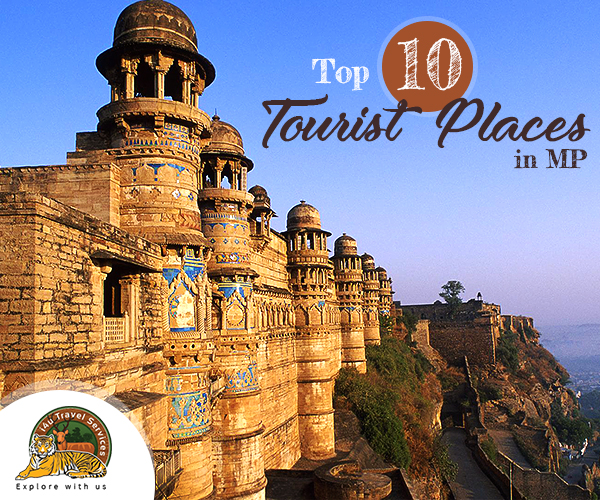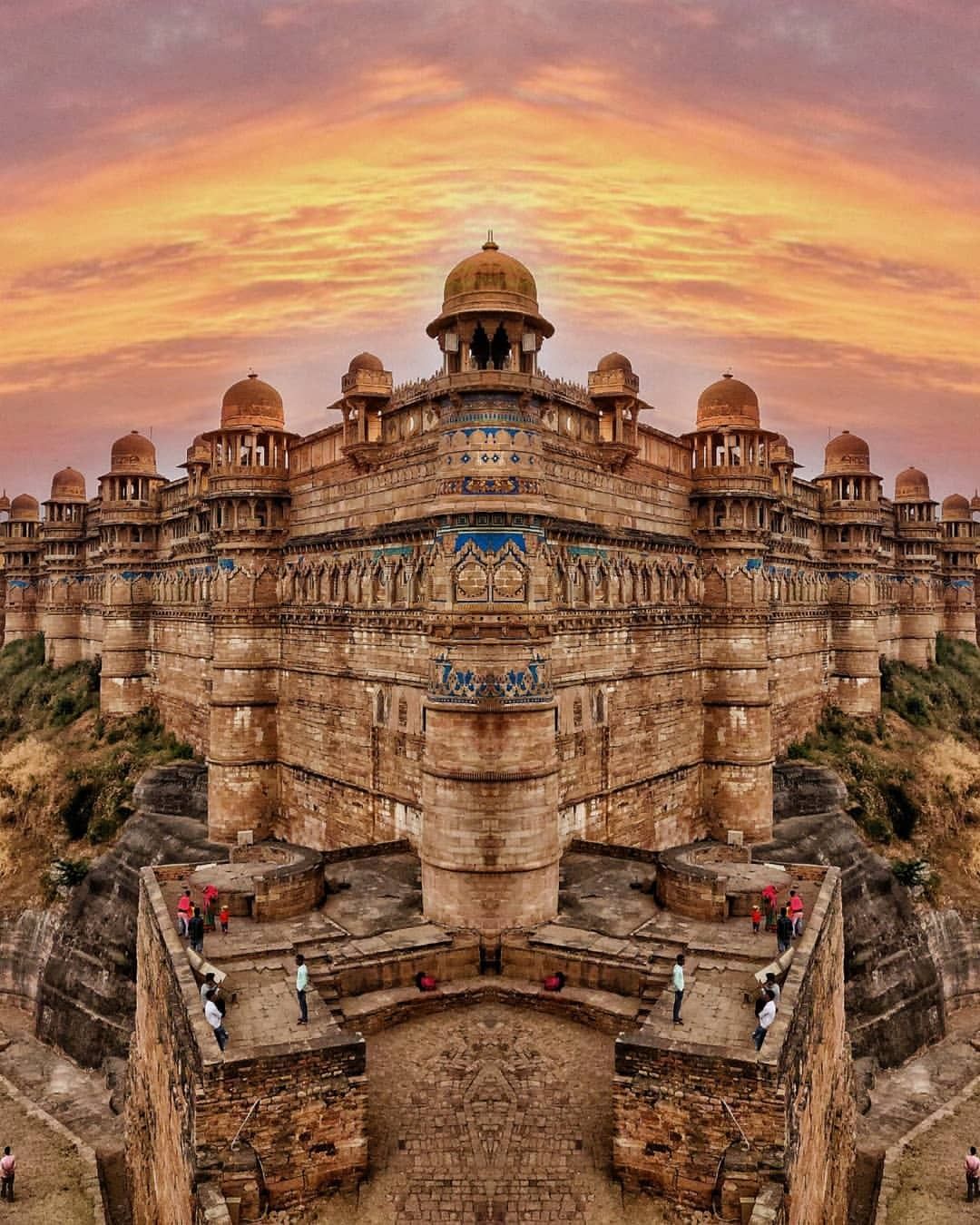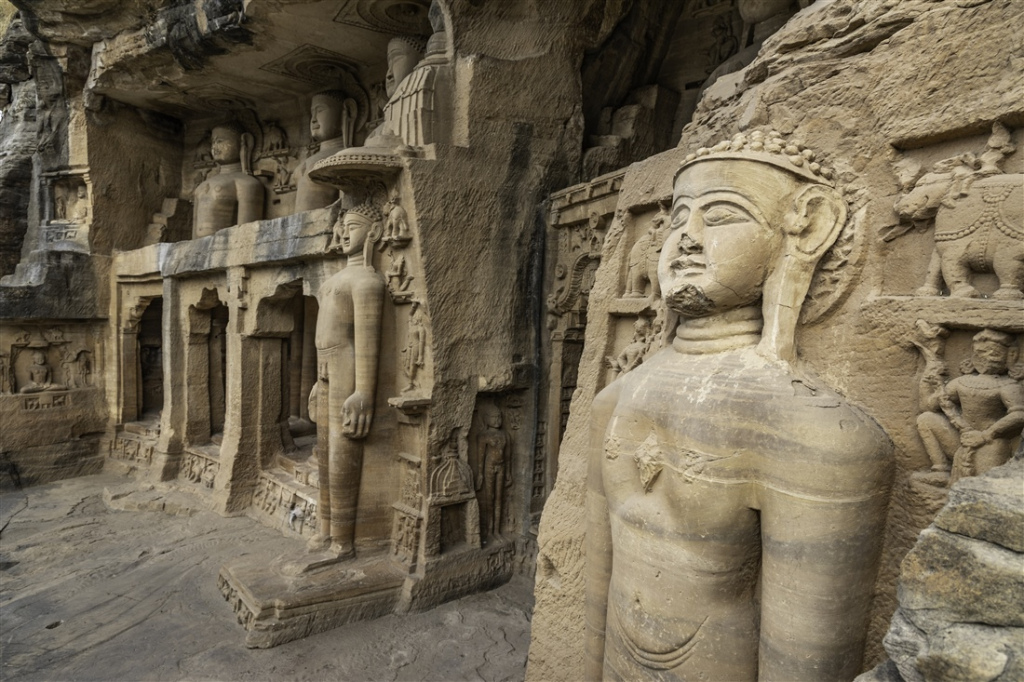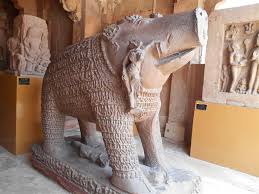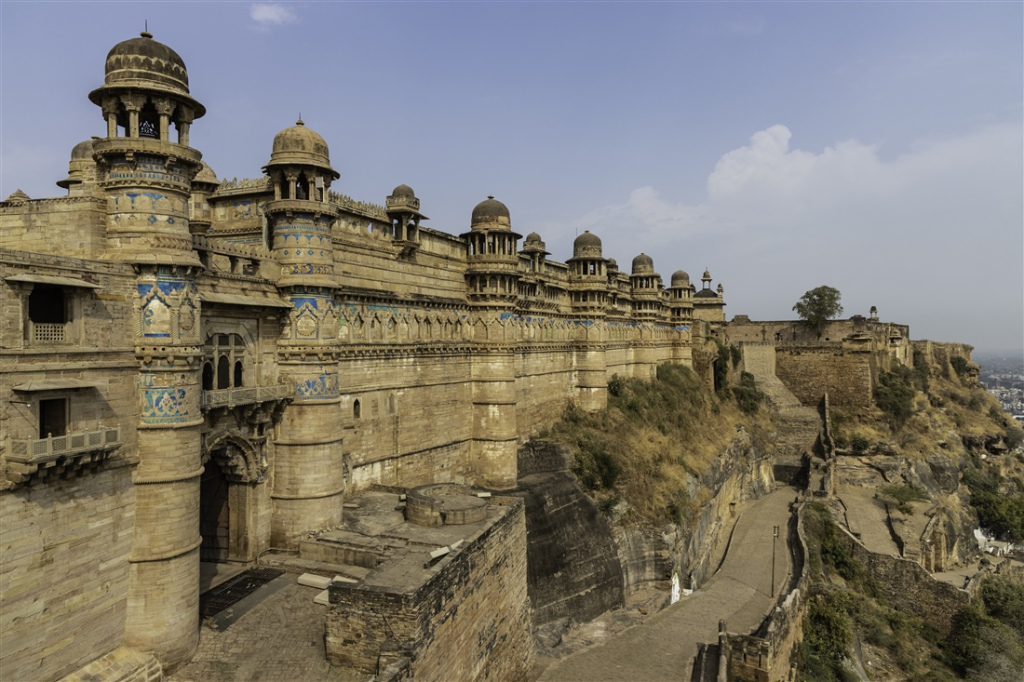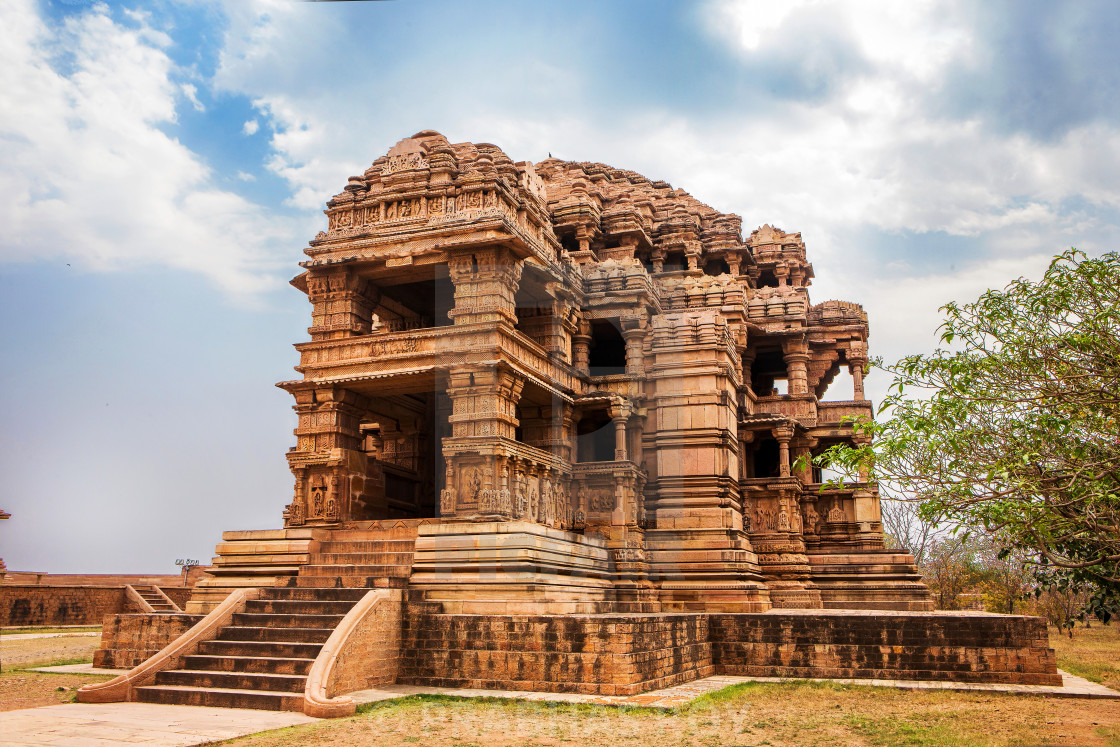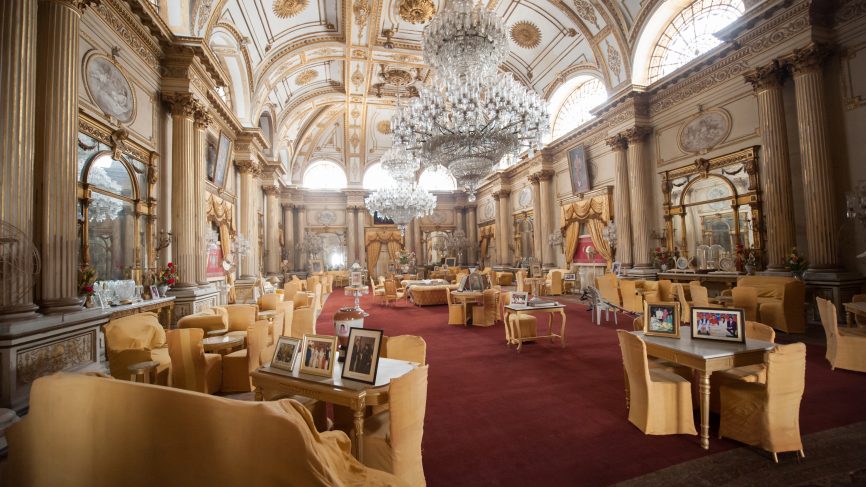ASI Museum
The archaeological museum, the second museum along this way, is located before the entrance to Man Singh Palace. It was established by the ASI in 1993, in the building, which is colonial times served as a jail and hospital. The museum comprises a big hall, an adjacent room and two verandahs. Sculptures displayed here date from the 1st century BCE to 17th century CE, spanning many sculptural traditions. These have been collected from Gwalior as well as the adjoining areas, including Amrol, Pawaya, Kherat, Ater, Mitawali, Shivpuri and Morena.
The sculptures are displayed in somewhat dark room, with scant details other than the name of the figure and the location where they were discovered. Unlike the State Arcaeological Museum in the Gujjari Mahal,though,there are LCD screens here with descriptions of the figures as well as the history of the region, for the benefit of those inclined towards a history lesson.
Look out for the Kutwar display case, the most interesting display in the museum. The ancient town of Kutwar has been linked with Kunti, the mother of the Pandavasin the Mahabharata. The case displays some interesting artefacts found to during excavations conducted by the ASI in 1996 – 97, including terracotta beads, antimony rods, bone joints,and many more.
State Protected Monuments
Past the gate of the Man Singh Palace is a gate and ticket booth for a connected set of monuments that nevertheless are managed separately, by MP State Tourism. You will need to get another ticket and pay an additional camera fee to be able to take pictures.
Though much larger than the Man Singh Palace,in terms of space to walk around in, the monuments look somewhat unkempt and their maintenance leaves much to be desired. The compound is usually desolate except for group of young men. Solo travelers are adviced to be extra cautious, but it is really the wisest course to head here with a group especially if you want to go inside. The ticket counter can help provide a guide ( costing Rs 100 approx )but it may not be worth the effort unless you are very interested in historical monuments.
Vikram Mahal
Vikram Mahal is a prominent Mahal here,and was constructed by Raja Man Singh’s son and heir Vikramaditya. The Palace is rather simple in its architecture;there is a baradari ( a pavilion with 12 doors ) in the middle, with a room on each side and an upper storey. Opposite it, Karan Mahal was constructed by Kirti Singh,the second ruler of the Tomar Dynasty. Features of the palace include a rectangular hall in the middle of the structure, which was probably the court of the king, as well as well as a hamam.
Other monuments in the complex include the Jauharkund, Dhondapur Gate, Jehangir Palace and Shah Jahan Palace.

